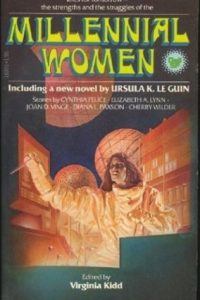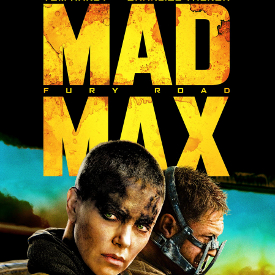I have long wanted to do a write up on the subject contained herein, but recognized that to do it properly required far more research than I could devote to it.
Originally, I relegated it to the very short list of projects that I would devote myself to in retirement; projects which include a full and complete cataloging of my collection and the Rim Worlds Concordance (A. B. Chandler).
But as I’ve completed my physical move and began to have time and energy for things beyond bookcase assembly, I find that my desire to express the thoughts here has exceeded my desire to present a researched and fully completed thesis. A piece intended for casual interest will do. For now.
The subject in question is nothing less than the creation of our genre and the early history that has led us all to the present time and place.
Most are familiar with the general background and supposed history and most have at least read others with grounded claims of expertise who have opined on the subject.
Fairly recently, Alec Nevala-Lee offered us Astounding: John W. Campbell, Isaac Asimov, Robert A. Heinlein, L. Ron Hubbard, and the Golden Age of Science Fiction, (aside: which history should have won the Hugo Award in the Related Subject category but was pushed out by the ill-considered decision to allow a non-qualifying website to be nominated), in which he makes the case that the editor, John W. Campbell Jr., in supporting and encouraging the named authors, further refined and solidified the boundaries of what we call Science Fiction.
Others have offered up Mary Shelley as the “Mother” of science fiction for authoring Frankenstein: The Modern Prometheus, the first novel that based its plot on scientific influences.
Our own Hugo Gernsback has been credited as the namer of the genre, the definer of the genre, the person who first recognized that stories featuring science and technology could influence science and technology.
Brian Aldiss, ably abetted by James Gunn (and others), made serious attempts (Billion Year Spree, The Road to Science Fiction) to establish a literary history for the genre.
Samuel Moskowitz, Harry Warner, Lowndes and others have approached from a different tac, focusing on the social phenomena of science fiction Fandom, covering the feuds, the clubs, the fanzines (amateur publications) and the frequent and easy way that the professional authors, artists and editors moved between the world of publishing and the world of fandom.
Both approaches are wrong, and both fail to capture the true dynamics of what happened and how it continues to evolve. Both sets of writer/researcher/historian/analysts treat the literary genre and its fannish community as two separate, if intertwined and interdependent, entities when, in fact, those two things are merely two aspects of a greater whole. They’re so intertwined that even the expression “two sides of the same coin” is inaccurate, unless it were a see-through coin that allowed you to see both sides simultaneously.
This unique relationship bears a little belaboring.
About the closest thing to (for convenience sake I’ll call it “Fandom”, though in this context I mean the Science Fiction Zeitgeist) was the earlier (and still extant) Sherlock Holmes literary societies; the readers (fans) got Holmes resurrected when Doyle had killed him off.
They wrote letters, had clubs and meetings, published amateur magazines, wrote their own Holmes fan-fic and even critiqued Holmes’ powers of deduction.
But unlike SF Fandom, they were really only dealing with a single author’s output, one alternate reality and expanded their interest(s) in a limited way; there are only so many variants on deer stalker hats one can dig up. When the film series starring Basil Rathbone and Nigel Bruce ended, there was no studio resurrection engendered by a write in campaign and, while modern day detective shows all owe something of themselves to Holmes, the time when his techniques and theories impacted the real world in non-fictional ways are long gone. Even his favorite drug has been supplanted by modern alternatives.
Science Fiction, the zeitgeist, ranges wider, deeper and remains contemporaneous with the real world, while continuing to influence the real world in all manner of different ways, ways ranging from waterbeds to the continued research into achieving FTL.
It is a unique phenomena that weaves through all aspects of the genre and can not be separated from it, and the people largely responsible for setting it all in motion are not the folks you’d normally expect to be credited. It’s not Gernsback, it’s not Campbell.
It’s the Futurians.
If you aren’t really familiar with the history of science fiction fandom (or, alternatively, the history of science fiction literature), that name will mean little to you. Names associated with this early club/social network, on the other hand, ought to be very familiar. Those names are:
Donald Wollheim, Jack Williamson, Ray Bradbury, Isaac Asimov, Damon Knight, James Blish, Frederik Pohl, Hannes Bok, Rosalind Cohen, Robert Lowndes, Judith Merril, Dave Kyle, Elise Balter, Cyril Kornbluth, Virginia Kidd, and others, most of whom feature prominently in the literature and fandom both.
Many of those names resonate outside the relatively small circle of Science Fiction; a small number have transcended SF fame to become internationally famous for many different things.
I can only really do justice by this historical theory if I were to write a monograph for each individual previously named in order to display their influences by way of works. That’s not possible in this venue, so a shorter listing of the highlights of things they contributed will have to suffice:

 Donald Wollheim articulated fandom’s non-commercial nature by attacking – and destroying – the SFL and other commercially oriented fan organizations; he was also influential in making SF a major category of paperback publishing, helped establish the anthologizing of shorter works and, early on, edited several pulp magazines that bought from would-be major authors in the field, helping them establishing their own influential careers; at Ace, he published numerous first novels, establishing both the dos-a-dos concept and the “fix-up” novel (the melding of shorter works originally published in the magazines). He also brought Tolkien’s LotR series to American shores, albeit under questionable circumstances (ironically engaging in a literary faux pas of far greater impact than any Gernsbackian non-payment). He also edited 10 Story Fantasy, Avon Fantasy, Science Fiction, Science Fiction & Fantasy Readers, Out of this World Adventures, Stirring Science Stories and, with Terry Carr and, later Art Saha, the paperback best of the year series, running from 1965 through 1990 (!).
Donald Wollheim articulated fandom’s non-commercial nature by attacking – and destroying – the SFL and other commercially oriented fan organizations; he was also influential in making SF a major category of paperback publishing, helped establish the anthologizing of shorter works and, early on, edited several pulp magazines that bought from would-be major authors in the field, helping them establishing their own influential careers; at Ace, he published numerous first novels, establishing both the dos-a-dos concept and the “fix-up” novel (the melding of shorter works originally published in the magazines). He also brought Tolkien’s LotR series to American shores, albeit under questionable circumstances (ironically engaging in a literary faux pas of far greater impact than any Gernsbackian non-payment). He also edited 10 Story Fantasy, Avon Fantasy, Science Fiction, Science Fiction & Fantasy Readers, Out of this World Adventures, Stirring Science Stories and, with Terry Carr and, later Art Saha, the paperback best of the year series, running from 1965 through 1990 (!).

 Fred Pohl edited some of the early pulps that were career starters for some of the biggest names in the field; he was one of the first agents for SF and fantasy authors, but, more importantly, he was an editor for major book publishing firms and championed the cause of intellectual, high-concept SF, including bringing Delaney’s Dhalgren and Joanna Russ The Female Man to print. Let me not give his editorial work short-shrift: the titles he edited were: Galaxy, If, Worlds of Tomorrow, International Science Fiction, Super Science Stories, Astonishing Stories, Star Science Fiction, the first two award-winning and highly influential. He was also briefly an agent for Futurian friends, a member and speaker for the World Future Society, and, of course, the author, along with Cyril M. Kornbluth of Gravy Planet/The Space Merchants, a 1950s era novel that not only still resonates today, but is an exemplar of extrapolation and world-building.
Fred Pohl edited some of the early pulps that were career starters for some of the biggest names in the field; he was one of the first agents for SF and fantasy authors, but, more importantly, he was an editor for major book publishing firms and championed the cause of intellectual, high-concept SF, including bringing Delaney’s Dhalgren and Joanna Russ The Female Man to print. Let me not give his editorial work short-shrift: the titles he edited were: Galaxy, If, Worlds of Tomorrow, International Science Fiction, Super Science Stories, Astonishing Stories, Star Science Fiction, the first two award-winning and highly influential. He was also briefly an agent for Futurian friends, a member and speaker for the World Future Society, and, of course, the author, along with Cyril M. Kornbluth of Gravy Planet/The Space Merchants, a 1950s era novel that not only still resonates today, but is an exemplar of extrapolation and world-building.

 Isaac Asimov – became a star of stage and screen and was always careful to admit that he wrote science fiction and attended its conventions, so long as they were only a car ride away. Asimov became a go-to, representing science and science fiction by both broadcast news and advertising outlets. He became a favorite of Campbell and, as toastmaster at many Hugo Award ceremonies, continuously demonstrated the close relationship between fans and professionals in the field.
Isaac Asimov – became a star of stage and screen and was always careful to admit that he wrote science fiction and attended its conventions, so long as they were only a car ride away. Asimov became a go-to, representing science and science fiction by both broadcast news and advertising outlets. He became a favorite of Campbell and, as toastmaster at many Hugo Award ceremonies, continuously demonstrated the close relationship between fans and professionals in the field.

 Judith Merrill, became one of the most influential authors and editors in the field, beginning by accepting a challenge from Campbell (proving that women could too write science fiction), editing one of the earliest annual anthology series – The Year’s Greatest SF (including thoughtful editorial commentary that always sought to expand the horizons of the field) and championed the New Wave in the 60s.
Judith Merrill, became one of the most influential authors and editors in the field, beginning by accepting a challenge from Campbell (proving that women could too write science fiction), editing one of the earliest annual anthology series – The Year’s Greatest SF (including thoughtful editorial commentary that always sought to expand the horizons of the field) and championed the New Wave in the 60s.

 Hannes Bok cut his illustrating teeth on mimeo-stencils. He championed artistic integrity and demonstrated that SF illustration could be surrealistic.
Hannes Bok cut his illustrating teeth on mimeo-stencils. He championed artistic integrity and demonstrated that SF illustration could be surrealistic.

 Damon Knight, for whom SFWA’s Grand Master Award is named has perhaps left the greatest mark on this culture: He founded the SFWA writer’s guild; he founded the Milford Writing Conference, but only after demonstrating how literary critique could and should be applied to the genre. Milford eventually led to the Clarion workshops that still run today. And he edited the highly influential original anthology series Orbit, which ran for 21 annual editions, from 1966 through 1980. Throughout, he championed the concept that good science fiction should be well-written as well.
Damon Knight, for whom SFWA’s Grand Master Award is named has perhaps left the greatest mark on this culture: He founded the SFWA writer’s guild; he founded the Milford Writing Conference, but only after demonstrating how literary critique could and should be applied to the genre. Milford eventually led to the Clarion workshops that still run today. And he edited the highly influential original anthology series Orbit, which ran for 21 annual editions, from 1966 through 1980. Throughout, he championed the concept that good science fiction should be well-written as well.

 Virginia Kidd would establish one of the best known literary agencies devoted to science fiction and fantasy, becoming in fact the first female agent in the field. She championed female authors and works, representing, among others, Ursula Le Guinn, Judith Merril, Juanita Coulson, Alan Dean Foster, R. A. Lafferty, Anne McCaffrey, Christopher Priest, Joanna Russ, and Gene Wolfe; the prominence of that short list of clients is some indication of her influence.
Virginia Kidd would establish one of the best known literary agencies devoted to science fiction and fantasy, becoming in fact the first female agent in the field. She championed female authors and works, representing, among others, Ursula Le Guinn, Judith Merril, Juanita Coulson, Alan Dean Foster, R. A. Lafferty, Anne McCaffrey, Christopher Priest, Joanna Russ, and Gene Wolfe; the prominence of that short list of clients is some indication of her influence.
There’s more. As mentioned previously, each one is deserving of a monograph. Their paths became intertwined at Futurian meetings and would remain so throughout their careers: Merril married Pohl; Kidd married Blish; Wollheim and Pohl and Blish and Knight and Merril bought stories and art from their compatriots. Sitting at the center of it all, it was not too long before virtually everyone in the field had some kind of connection – usually first hand – to one or more of them.
Summing up, this group of fans-turned professionals established:
- the writing and art careers of some of the biggest names IN the field
- helped establish the genre as a paperback mainstay
- established the anthology as a mainstay of the field
- edited some of the most influential magazines in the field
- established some of the most influential anthologies in the field
- helped to create literary critique of the genre
- helped to create agenting for the field
- established the most influential writing conference in the field
- established the guild representing professionals in the field
- and, earlier
established some of the first science fiction clubs; published some of the first fanzines in the field and helped to establish annual conventions as a thing in the field
Their individual works featured in OTR radio programs, early television anthology shows and SF television shows that are still popular today, including The Outer Limits and The Twilight Zone.
There is not one single aspect of this field that can not trace its roots back to activities and contributions made by the Futurians, and it is the Futurians, collectively, who should be getting the lion’s share of credit for creating the field as we know it. They took their adolescent interests and enthusiasms and parlayed them into a cultural phenomena that is still influencing the world, in uncountable ways, to this day.










